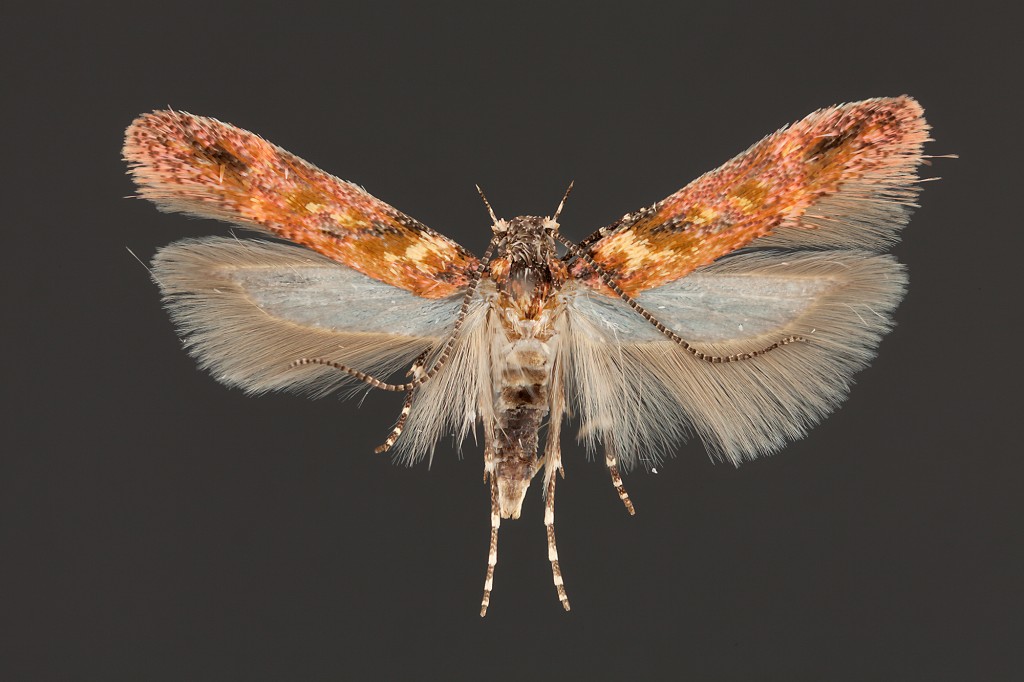Sâu bướm này là một ví dụ tốt về những gì rất nhiều sâu bướm của tôi tại thời điểm này – không xác định! Điều này chắc chắn là một Gelechiidae, bạn sẽ nhìn thấy palps hếch lớn trên mặt trước của đầu, và một sự phóng chiếu hình ngón tay trên những lời khuyên của hindwings. Chỉ cần về một trong những gia đình đơn giản nhất của microleps để xác định. Và từ một Gestalt nói chung có lẽ điều này là trong Gnorimoschemini? Nếu ai đó nhận ra anh chàng nhỏ bé này, xin vui lòng cho tôi biết, nếu không tôi sẽ tấn công các tài liệu để thử và theo dõi tên. Sâu bướm xinh đẹp này là từ các ngọn núi bên ngoài của Prescott, THE – Tháng Bảy 2010. Thay enjoyably, có microlepidoptera rất nhiều mà không phải là dễ dàng xác định.


wow. How often are you looking to id one of your tinsy (my technical term) moths and you discover it’s not yet been described?
I know that in the plant world, the very tiny species are frequently overlooked (no pun intended), so someone I met who studied them got published really easily. Just curious if this also applies to you/your expertise.
=)
Certainly does! There are roughly 11,000 species of moths described in the US right now – we probably have 3-4,000 left to discover if not more. I have a few dozen specimens that seem to be undescribed but haven’t been verified yet, and I’m revising a genus and will get to describe about 5 new species. And that’s nothing – a colleague is revising a family and is up over 100 new moths already. Once you get into microleps you start finding new ones all over the place!
I understand the attraction of the small and hard to identify – the jewel beetle genus Agrilus fills that role for me. One of the most popular families of beetles among collectors, yet I found an undescribed species right here in Missouri. Difficult taxonomy is a repellent to some and an attractant to others.
I didn’t realise there were so may undescribed in the US. Have all the macro moths now be described? And are there any good guide books? Coming from the UK that has only a couple of thousand moths in total.
Hi Justin- No, we’re a long ways off from saying all the marcos are even described. I know of a few dozen new species of medium to large Noctuidae that are awaiting description. Each year there are just as many published – one of the larger and more impressive was Lithophane leeae described in 2009.
A great book for western moths is “Moths Tây Bắc Mỹ, Jerry Powell and Paul Opler.” It’s a text-book sized volume that attempts to cover most representative genera of western moth species (including micros). For eastern moths there is the older “Eastern Moths” by Charlie Covell.